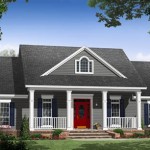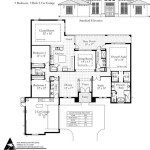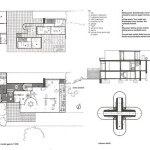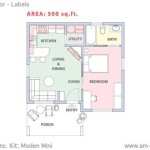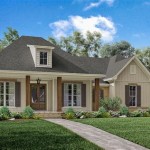Build My Own House Floor Plans: A Comprehensive Guide
Constructing a house represents a significant undertaking, demanding careful planning and execution. One of the foundational elements of this process involves the creation of house floor plans. These plans serve as a blueprint, dictating the layout, dimensions, and spatial relationships within the structure. Opting to "build my own house floor plans" provides an opportunity for customization and control over the design process, ensuring the final product aligns precisely with individual needs and preferences.
However, designing house floor plans requires a blend of architectural knowledge, understanding of building codes, and spatial reasoning. This article provides a comprehensive guide to navigating the process of creating personalized house floor plans, outlining key considerations and resources available to individuals embarking on this endeavor.
Understanding Fundamental Design Principles
Before initiating the design process, it is crucial to grasp fundamental design principles that underpin effective floor plan creation. These principles impact the functionality, aesthetics, and overall livability of the house. Consideration should be given to:
Traffic Flow: The arrangement of rooms and hallways significantly affects movement within the house. A well-designed floor plan minimizes congestion and facilitates smooth transitions between spaces. Common traffic paths should be carefully considered to avoid disrupting activities in other areas.
Spatial Relationships: The proximity and connectivity of different rooms contribute to the overall usability and flow of the house. For example, placing the kitchen adjacent to the dining area promotes efficiency during meal preparation and service. Similarly, locating bedrooms away from noise-generating areas like the living room ensures privacy and quietude.
Natural Light and Ventilation: Maximizing natural light and ventilation enhances the comfort and energy efficiency of the living spaces. Window placement should be strategically planned to capture sunlight and promote airflow, reducing reliance on artificial lighting and air conditioning. Orienting the house to take advantage of solar gains during colder months and mitigating heat gain during warmer months can further enhance energy efficiency.
Privacy and Functionality: Rooms should be designed with their intended purpose in mind. Bedrooms require privacy and sound insulation, while living areas should be conducive to social interaction. The placement of bathrooms should be convenient for both occupants and guests. Storage spaces should be strategically located throughout the house to minimize clutter and maximize organization. Consider acoustics when planning entertainment areas or home offices.
Universal Design Principles: Incorporating universal design principles during the initial design phase ensures accessibility and usability for people of all ages and abilities. This includes features such as wider doorways, accessible bathrooms, and level thresholds, promoting independent living and aging in place.
Utilizing Design Tools and Resources
A variety of tools and resources are available to assist in the creation of house floor plans, catering to different levels of expertise and technical proficiency. These resources can streamline the design process and help visualize the final product before construction begins.
Manual Drafting: Traditional drafting techniques involve using pencils, rulers, and other drafting tools to create hand-drawn floor plans. While this method requires more manual effort, it allows for greater control over the design and can be a valuable skill for understanding spatial relationships. Graph paper, architectural scales, and drafting triangles are essential tools for manual drafting. Familiarity with architectural symbols and conventions is also important.
Computer-Aided Design (CAD) Software: CAD software provides a digital environment for creating precise and detailed floor plans. These programs offer a wide range of features, including automated dimensioning, 3D modeling, and the ability to import and export files in various formats. Popular CAD software options include AutoCAD, Revit, and ArchiCAD. While these programs require a learning curve, they offer significant advantages in terms of accuracy, efficiency, and collaboration.
Online Floor Plan Software: Numerous online floor plan software platforms offer user-friendly interfaces and pre-designed templates, making them accessible to individuals with limited design experience. These platforms typically feature drag-and-drop functionality, allowing users to easily add and arrange rooms, furniture, and other design elements. Examples of online floor plan software include Planner 5D, RoomSketcher, and SmartDraw. These options provide a quick and convenient way to create basic floor plans and visualize different design options.
Professional Software Alternatives: For advanced users or those seeking professional-grade features, software like SketchUp (with extensions for architectural design) or Chief Architect offers a balance between ease of use and robust functionality. These programs allow for more complex modeling, rendering, and integration with other design tools.
Consulting with Professionals: While it is possible to "build my own house floor plans," consulting with architects, interior designers, or structural engineers can provide valuable insights and expertise. These professionals can help identify potential design flaws, ensure compliance with building codes, and optimize the functionality and aesthetics of the house. Engaging with professionals early in the design process can save time and money in the long run.
Navigating Building Codes and Regulations
Adherence to building codes and regulations is paramount when creating house floor plans. These codes ensure the safety, structural integrity, and accessibility of the building. Failure to comply with building codes can result in delays, fines, or even the rejection of the building permit application.
Local Building Codes: Building codes vary by jurisdiction, so it is essential to consult with the local building department to understand the specific requirements in the area. These codes typically cover aspects such as structural design, fire safety, plumbing, electrical systems, and energy efficiency.
Zoning Regulations: Zoning regulations dictate how land can be used and may impose restrictions on building height, setback distances, and lot coverage. Understanding zoning regulations is crucial to ensure that the proposed house design complies with the applicable rules.
Accessibility Standards: Accessibility standards, such as the Americans with Disabilities Act (ADA), require that buildings be accessible to individuals with disabilities. Incorporating accessible design features, such as ramps, wider doorways, and accessible bathrooms, is essential for compliance. Many regions have their own specific disability access requirements that may go beyond federal regulations.
Energy Efficiency Standards: Many jurisdictions have adopted energy efficiency standards, such as the International Energy Conservation Code (IECC), to reduce energy consumption in buildings. Complying with these standards may require incorporating specific insulation levels, window types, and HVAC systems into the house design. Local incentives and rebates may be available for incorporating energy-efficient features.
Permitting Process: Obtaining a building permit is typically required before commencing construction. The permitting process involves submitting the house floor plans and other relevant documents to the local building department for review. The building department will assess the plans for compliance with building codes and regulations. Addressing any issues raised by the building department promptly is crucial to avoid delays.
Inspections: During construction, the building department will conduct inspections to ensure that the work is being performed in accordance with the approved plans and building codes. These inspections typically occur at various stages of construction, such as after framing, plumbing, and electrical work. Addressing any deficiencies identified during inspections promptly is essential to avoid delays and ensure compliance.
While designing "build my own house floor plans" offers significant control and customization, understanding and navigating building codes and regulations requires diligence and attention to detail. Consultation with building professionals and thorough research are crucial for ensuring a successful and compliant project. Regularly checking for updates to local building codes and regulations is also important, as these codes can change over time.

Designing My Own House

My Own House Design Model Free 3d Floor Plans By Planner 5d

House Plans And Design

Pin On Build My Own House

Vignette Design Bucket List 7 Build A House From Scratch

Craftsman House Plan With 4 Bedrooms And 3 5 Baths 8993

Open Floor Plan Plans House Dream

How To Read A Floor Plan And Design The Perfect Home For You

House Plans And Design

Content In A Cottage Architectural Plans For Mr Blandings Type Dream House Costing 12 500 1917


